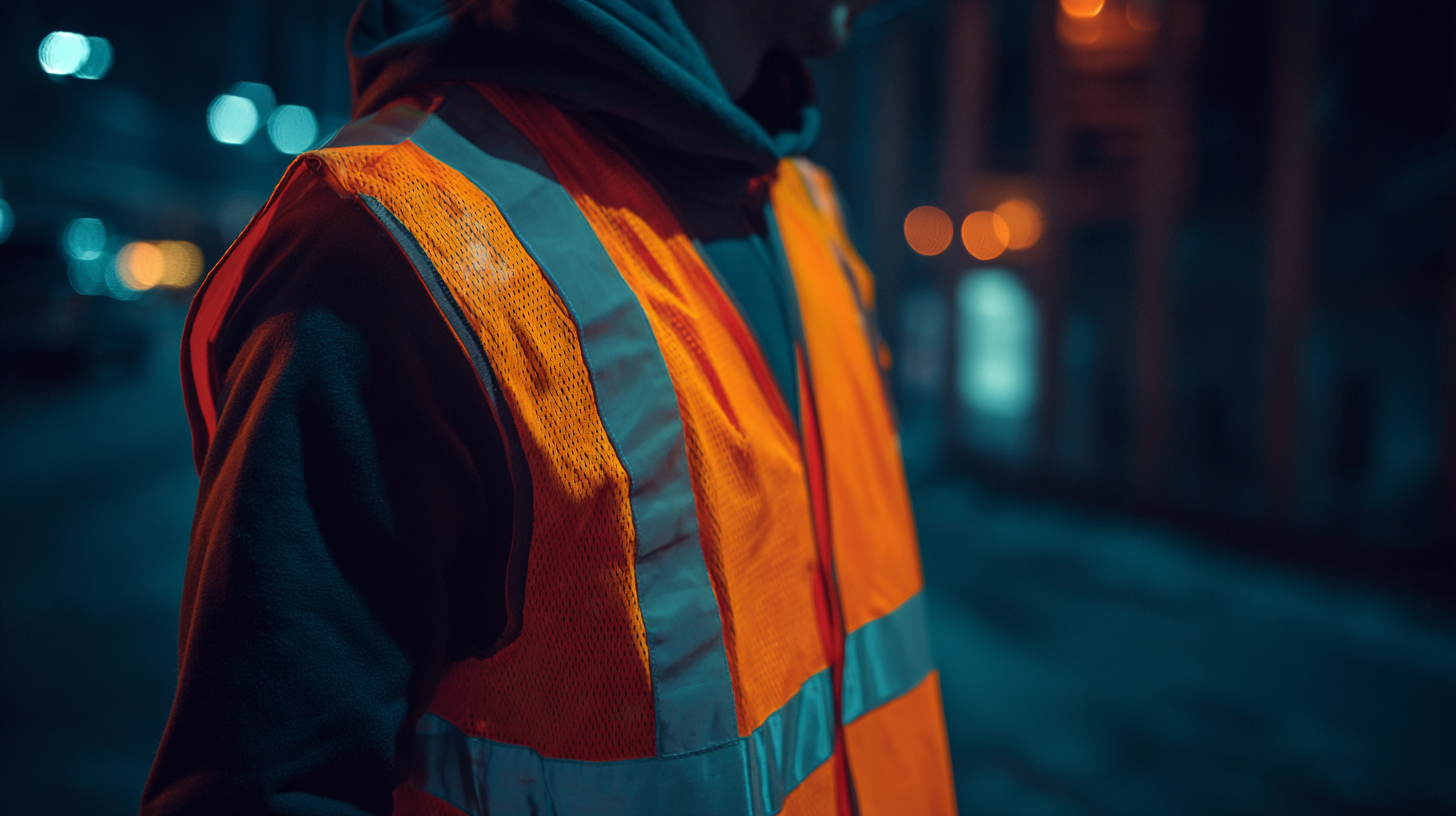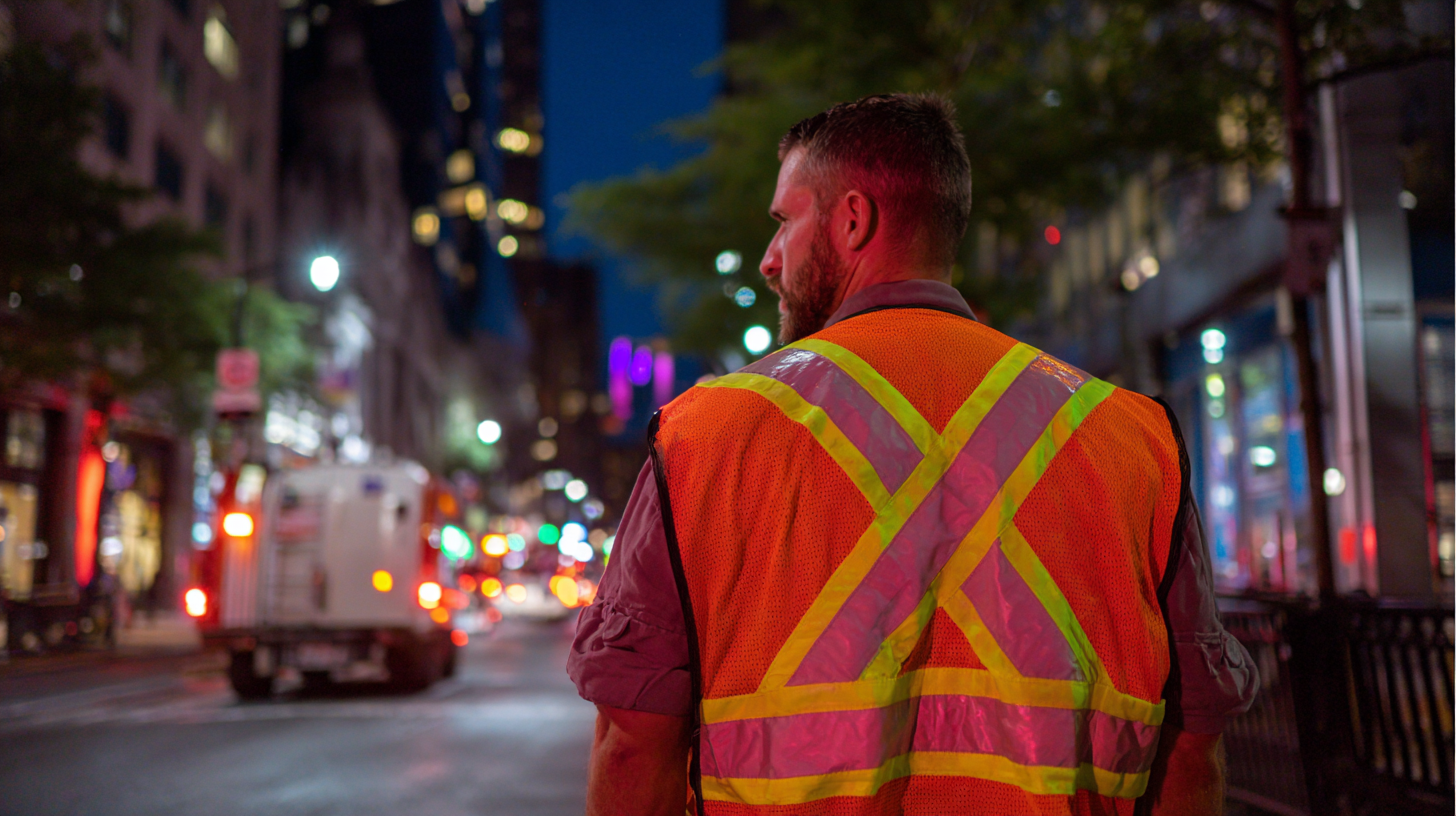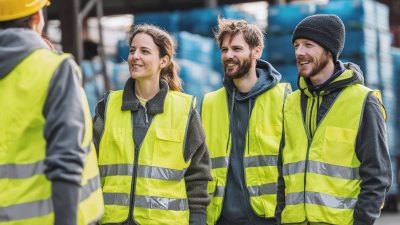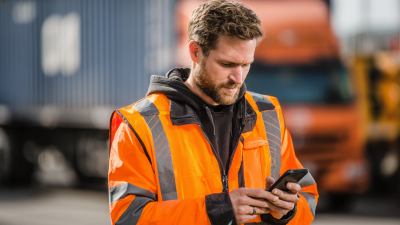In 2025, the importance of safety in low-light environments has never been more pronounced, making the selection of a High Visibility Vest an essential consideration for various professionals. As industries evolve and workplace regulations become increasingly stringent, these vests are not just a mere accessory but a critical element in ensuring visibility and protection while on the job. The latest trends highlight innovative designs and advanced materials that not only enhance visibility but also improve comfort and functionality for wearers across diverse occupations.
As we delve into the top trends for High Visibility Vests in 2025, we will explore key features that cater to specific industry requirements, including construction, road work, and outdoor activities. From reflective technologies that amplify light reflection to breathable fabrics that ensure all-day comfort, the landscape of high visibility apparel is rapidly changing. Moreover, sustainability is becoming a priority, with manufacturers focusing on eco-friendly materials while still adhering to safety standards. Join us as we navigate these pivotal trends that define the future of High Visibility Vests, aiming to keep workers safe and seen in every environment.

 High visibility vests have undergone significant evolution over the years, adapting to new safety standards and technological advancements. As we look towards 2025, these essential garments are set to become even more integral in low-light environments. Innovations in fabric technology have led to vests that are not only brighter and more reflective but also lighter and more comfortable for prolonged wear. Enhanced breathability and moisture-wicking materials ensure that workers can remain safe without sacrificing comfort, making these vests a staple in various industries.
High visibility vests have undergone significant evolution over the years, adapting to new safety standards and technological advancements. As we look towards 2025, these essential garments are set to become even more integral in low-light environments. Innovations in fabric technology have led to vests that are not only brighter and more reflective but also lighter and more comfortable for prolonged wear. Enhanced breathability and moisture-wicking materials ensure that workers can remain safe without sacrificing comfort, making these vests a staple in various industries.
When selecting a high visibility vest, consider these tips:
As we move forward, sustainability will also play a key role in the design of high visibility vests. Expect to see more eco-friendly materials and practices being integrated into their production, reflecting a growing awareness and responsibility towards environmental impact while maintaining high safety standards.
The evolution of high visibility vests is significantly influenced by innovative materials designed to enhance safety in low-light environments. Traditionally made from basic fluorescent fabrics, the latest vests now feature advanced textiles that incorporate reflective technology, providing greater visibility. These materials are engineered to reflect light more effectively, ensuring that wearers can be seen from long distances, even in challenging conditions such as nighttime construction sites or inclement weather.

Moreover, the integration of moisture-wicking and breathable fabrics into safety gear is transforming user comfort and functionality. These innovative materials keep the wearer dry and cool, reducing discomfort during prolonged use. Additionally, some vests are now equipped with lightweight, durable fabrics that resist wear and tear, making them suitable for rigorous environments. As the demand for safety and comfort grows, we can expect these advancements to redefine the standards for high visibility gear in 2025 and beyond, ultimately enhancing the safety of workers across various sectors.
In 2025, the trends in high visibility vests are evolving with a clear focus on color and design to enhance safety in low-light environments. According to a report by the International Safety Equipment Association, approximately 70% of workplace accidents occur in conditions where visibility is compromised. The shift towards brighter, more reflective materials has been driven by the need to address these concerns, and current trends showcase vivid colors like neon yellow, orange, and even innovative patterns designed to stand out in various conditions.
Furthermore, design enhancements are not just about color but also incorporate advanced materials that improve comfort and functionality. The 2023 Safety Apparel Market Analysis indicated that companies prioritizing both visibility and user comfort see a 30% increase in employee compliance wearing safety gear. Features such as moisture-wicking fabrics, breathable mesh panels, and increased pocket space are becoming standard. This blend of fashion and function not only meets safety regulations but also encourages more workers to adopt these essential garments, ultimately fostering a culture of safety in areas prone to low visibility.
In 2025, the integration of advanced technology into high visibility vests is reshaping the landscape of safety apparel, particularly in low-light environments. With the rise of smart textiles and embedded electronics, these vests are not just designed to stand out but also to enhance the wearer's safety through innovative features. For instance, some vests are now equipped with LED lights that automatically adjust to ambient light conditions, ensuring maximum visibility regardless of the surroundings. This adaptability is crucial for workers in construction, emergency response, and road safety, where visibility can be compromised by changing weather or time of day.
Moreover, technological advancements extend beyond mere visibility. Many modern high visibility vests incorporate real-time tracking systems that alert supervisors to the wearer's location, providing an added layer of security in hazardous work environments. Integration with smartphones or other devices allows for instant communication and updates, ensuring that safety protocols are maintained. These innovations not only increase individual safety but also foster a culture of awareness and responsiveness within teams, making high visibility vests an essential piece of gear for anyone working in challenging conditions.
The manufacturing of high visibility vests is undergoing a pivotal transformation as sustainability takes center stage. With increasing awareness regarding environmental issues, manufacturers are now prioritizing eco-friendly materials and practices in their production processes. This shift not only aims to reduce the carbon footprint associated with traditional vest manufacturing but also addresses consumer demand for products that are both functional and responsible. Innovative materials such as recycled polyester and organic cotton are becoming popular choices, reflecting a commitment to sustainability without compromising on safety and visibility.
Moreover, the incorporation of sustainable practices extends beyond materials to encompass the entire supply chain. Companies are investing in technologies that minimize waste during production and enhance energy efficiency. By adopting sustainable sourcing and manufacturing techniques, businesses can further promote their commitment to environmental stewardship. As the popularity of high visibility vests grows, so does the importance of ensuring that these essential safety garments contribute positively to the planet. This trend indicates a future where safety gear not only protects individuals in low-light environments but also aligns with a broader movement toward sustainability in the apparel industry.






